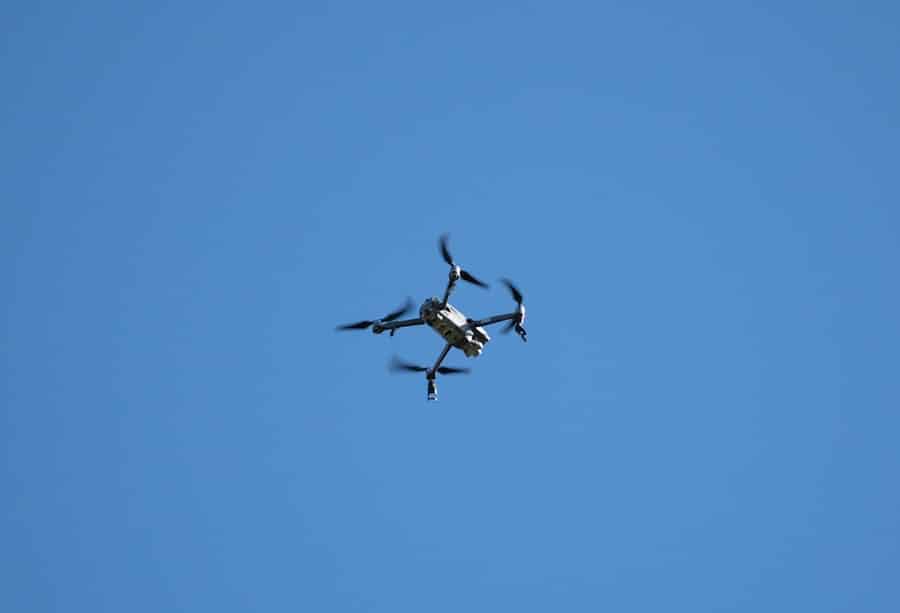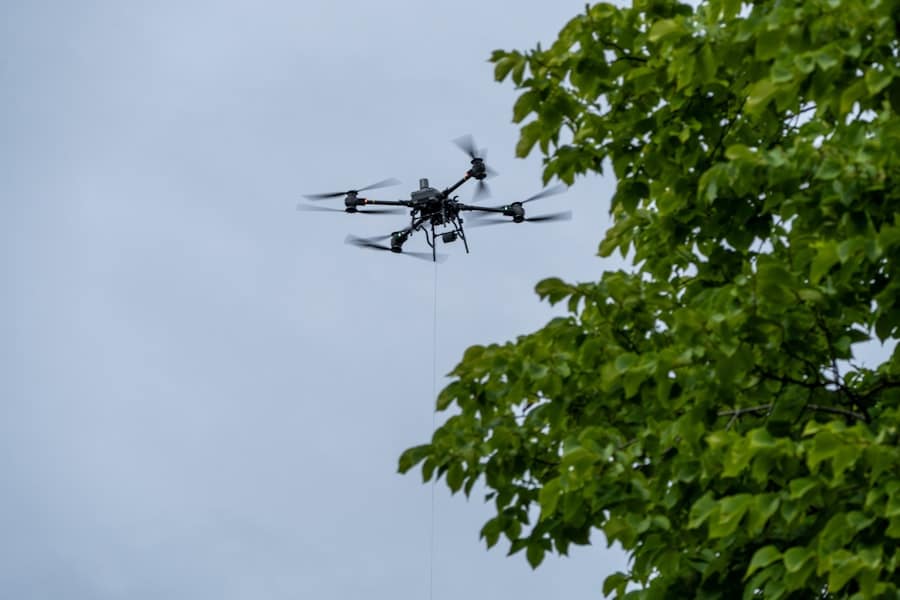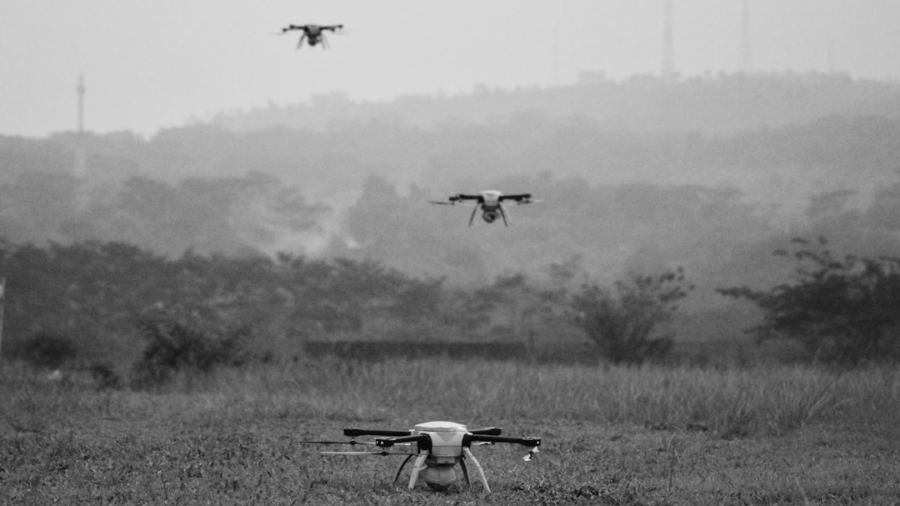The advent of drone technology has revolutionized various sectors, from agriculture to logistics, but perhaps its most profound implications lie within the realm of military defense. Drone swarms, which consist of multiple unmanned aerial vehicles (UAVs) operating in a coordinated manner, represent a significant leap forward in aerial warfare capabilities. These swarms can execute complex missions with remarkable efficiency, leveraging advanced algorithms and artificial intelligence to enhance their operational effectiveness.
The concept of drone swarms draws inspiration from natural phenomena, such as the behavior of flocks of birds or schools of fish, where individual units work together to achieve a common goal. This collective behavior allows for a level of adaptability and resilience that traditional military assets often lack. The integration of drone swarms into military operations is not merely a theoretical exercise; it is already being explored and implemented by various nations.
The United States, China, and Russia are among the countries investing heavily in this technology, recognizing its potential to reshape the battlefield. As military strategists contemplate the future of warfare, drone swarms emerge as a pivotal element in modern combat scenarios. Their ability to overwhelm enemy defenses, gather intelligence, and conduct precision strikes positions them as a formidable force multiplier.
However, the deployment of such technology also raises critical questions about ethics, legality, and the changing nature of conflict.
Key Takeaways
- Drone swarms are a group of drones that work together in a coordinated manner, often controlled by a single operator or a central computer system.
- Advantages of drone swarms in military defense include their ability to cover a larger area, overwhelm enemy defenses, and perform complex tasks such as surveillance and reconnaissance.
- Challenges and limitations of drone swarms include the potential for communication and coordination issues, susceptibility to electronic warfare, and the need for advanced technology and training.
- Current and future applications of drone swarms in military defense include autonomous targeting, search and rescue operations, and support for ground troops.
- Ethical and legal considerations of drone swarms include concerns about civilian casualties, privacy violations, and the need for clear regulations and guidelines for their use in warfare.
Advantages of Drone Swarms in Military Defense
One of the most significant advantages of drone swarms in military defense is their ability to conduct operations with enhanced situational awareness and adaptability. Unlike traditional military units that may rely on a single point of command, drone swarms can operate autonomously or semi-autonomously, utilizing decentralized decision-making processes. This allows them to respond to dynamic battlefield conditions in real-time, making them particularly effective in environments where rapid changes can occur.
For instance, during reconnaissance missions, a swarm can cover vast areas simultaneously, gathering intelligence from multiple angles and providing commanders with a comprehensive understanding of the operational landscape. Moreover, drone swarms can significantly reduce the risk to human life in combat situations. By deploying swarms for missions that would typically require manned aircraft or ground troops, militaries can minimize casualties while still achieving their objectives.
This capability is especially crucial in high-risk environments where enemy defenses are robust. For example, during an airstrike on a heavily fortified target, a swarm can saturate the area with multiple drones, overwhelming enemy air defenses and increasing the likelihood of mission success without putting pilots at risk. Additionally, the sheer number of drones in a swarm can create confusion and chaos among enemy forces, complicating their response and enhancing the effectiveness of the operation.
Challenges and Limitations of Drone Swarms

Despite their numerous advantages, drone swarms also face significant challenges and limitations that must be addressed for their effective deployment in military operations. One primary concern is the technological complexity involved in coordinating multiple drones simultaneously. While advancements in artificial intelligence and machine learning have made it possible for drones to operate autonomously, ensuring seamless communication and coordination among numerous units remains a formidable task.
Issues such as signal interference, communication breakdowns, or software malfunctions could lead to catastrophic failures during critical missions.
As militaries around the world develop swarm technology, adversaries are also investing in systems designed to detect and neutralize these threats.
Electronic warfare tactics, such as jamming communications or employing anti-drone systems, pose significant risks to the effectiveness of drone swarms. Furthermore, the reliance on GPS for navigation can be problematic in contested environments where signals may be disrupted or spoofed. This vulnerability necessitates ongoing research and development to create more resilient systems capable of operating effectively even in hostile conditions.
Current and Future Applications of Drone Swarms
Currently, drone swarms are being tested and deployed in various military applications, showcasing their versatility and potential impact on modern warfare. One notable example is the U.S. Navy’s development of the “LOCUST” (Low-Cost UAV Swarm Technology) program, which aims to deploy swarms of small drones from naval vessels for reconnaissance and strike missions.
These drones can be launched en masse to overwhelm enemy defenses or gather intelligence over large areas quickly.
S. Air Force has been experimenting with drone swarms for air-to-air combat scenarios, where multiple drones can engage enemy aircraft simultaneously, increasing the chances of success.
Looking toward the future, the applications of drone swarms are expected to expand significantly. As technology continues to advance, we may see swarms integrated into joint operations involving ground forces and naval assets. For instance, ground troops could deploy drone swarms for surveillance and target acquisition before launching an assault, providing real-time data that enhances situational awareness.
Additionally, advancements in swarm intelligence could lead to more sophisticated behaviors, such as adaptive tactics that allow drones to learn from previous encounters and adjust their strategies accordingly.
Ethical and Legal Considerations of Drone Swarms
The deployment of drone swarms raises profound ethical and legal questions that must be carefully considered by military planners and policymakers. One major concern is the potential for autonomous drones to make life-and-death decisions without human intervention. As these systems become more capable of operating independently, there is a risk that they could engage targets based on algorithms that may not fully account for the complexities of human judgment or ethical considerations.
This raises questions about accountability: if a drone swarm mistakenly targets civilians or causes unintended harm, who bears responsibility for those actions? Furthermore, the use of drone swarms in warfare could lead to an escalation of conflicts due to their ability to conduct rapid strikes with minimal human oversight. The ease with which these systems can be deployed may lower the threshold for engaging in military action, potentially leading to more frequent conflicts or an arms race among nations seeking to develop similar capabilities.
International legal frameworks governing armed conflict may need to evolve to address these new technologies adequately. The principles of distinction and proportionality—fundamental tenets of international humanitarian law—must be upheld even as warfare becomes increasingly automated.
Potential Impact of Drone Swarms on Warfare

The integration of drone swarms into military operations is poised to have a transformative impact on warfare as we know it. One potential outcome is the shift from traditional force-on-force engagements to more asymmetric forms of conflict. Smaller nations or non-state actors could leverage drone swarm technology to challenge larger military powers effectively.
This democratization of military capabilities could lead to a reconfiguration of power dynamics on the global stage, where technological prowess becomes a critical determinant of military effectiveness rather than sheer numbers or resources. Moreover, drone swarms could alter strategic doctrines by emphasizing speed and agility over traditional attrition-based strategies. The ability to deploy large numbers of drones quickly allows for rapid strikes against high-value targets while minimizing exposure to enemy defenses.
This shift could lead to new forms of warfare characterized by swift engagements and rapid maneuvering rather than prolonged battles. As militaries adapt to these changes, we may witness an evolution in training methodologies and operational planning that prioritizes swarm tactics and integrated systems.
Technological Developments in Drone Swarm Technology
The technological landscape surrounding drone swarm capabilities is evolving rapidly, driven by advancements in several key areas. One significant development is the improvement in communication protocols that enable drones within a swarm to share information seamlessly and coordinate their actions effectively. Innovations such as mesh networking allow drones to maintain connectivity even when some units are out of range from others, enhancing resilience against electronic warfare tactics aimed at disrupting communications.
Artificial intelligence plays a crucial role in enhancing the capabilities of drone swarms as well. Machine learning algorithms enable drones to analyze vast amounts of data quickly and make informed decisions based on real-time inputs from their environment. This capability allows for adaptive behaviors that can optimize mission outcomes based on changing conditions on the battlefield.
Additionally, advancements in sensor technology are enabling drones to gather more detailed information about their surroundings, improving their situational awareness and target identification capabilities.
The Future Outlook for Drone Swarms in Military Defense
As we look toward the future, it is clear that drone swarms will play an increasingly prominent role in military defense strategies worldwide. Their unique advantages—ranging from enhanced situational awareness to reduced risk for personnel—position them as essential tools for modern militaries seeking to maintain operational superiority. However, alongside these benefits come significant challenges that must be addressed through ongoing research and development efforts.
The ethical and legal implications surrounding drone swarm technology will require careful consideration as nations navigate this new frontier in warfare. Policymakers must engage in dialogue about accountability and responsibility while ensuring compliance with international humanitarian law. As technological advancements continue to unfold, it will be crucial for military leaders and strategists to adapt their doctrines and training methodologies accordingly.
In summary, while drone swarms present remarkable opportunities for enhancing military capabilities, they also necessitate a thoughtful approach to their integration into defense strategies. The future landscape of warfare will undoubtedly be shaped by these developments as nations grapple with the complexities introduced by this transformative technology.
In exploring the advancements in military technology, particularly the future of drone swarms in defense strategies, it’s essential to consider the broader technological landscape that supports such innovations. For instance, the integration of smart devices and their compatibility with various systems can play a crucial role in the operational efficiency of military technologies. An interesting related article to consider is Do Samsung Smartwatches Work with Rooted Phones? This article delves into the compatibility issues and technological considerations that are also relevant when discussing the synchronization and control of drone swarms, highlighting the importance of seamless integration across different tech platforms.
FAQs
What are drone swarms in military defense?
Drone swarms in military defense refer to a group of drones that work together in a coordinated manner to perform a variety of tasks, such as surveillance, reconnaissance, and even offensive operations.
How are drone swarms used in military defense?
Drone swarms can be used for a wide range of military applications, including intelligence gathering, target identification, electronic warfare, and even coordinated attacks on enemy targets.
What are the advantages of using drone swarms in military defense?
Some advantages of using drone swarms in military defense include their ability to cover a large area, their potential for autonomous operation, their cost-effectiveness compared to traditional manned aircraft, and their ability to overwhelm and confuse enemy defenses.
What are the challenges and limitations of using drone swarms in military defense?
Challenges and limitations of using drone swarms in military defense include the need for advanced coordination and communication systems, susceptibility to electronic warfare and hacking, potential for collateral damage, and ethical considerations regarding autonomous decision-making and potential for misuse.
What is the future outlook for drone swarms in military defense?
The future of drone swarms in military defense is likely to involve further advancements in autonomy, artificial intelligence, and swarm coordination, as well as continued development of counter-swarm technologies and ethical considerations surrounding their use in warfare.

